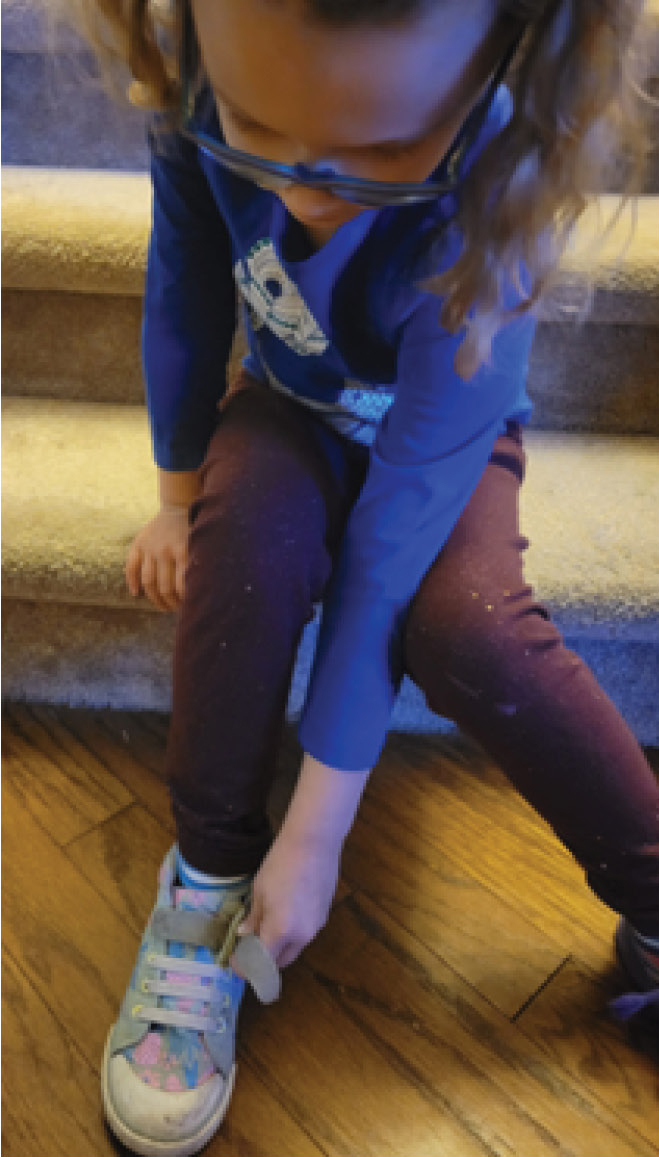The Early Years
We Borrowed That?
Bringing biomimicry to life in the early childhood classroom
The stabilimentum of a spider web is a jumping off point for exploring biomimicry.
Some spiders weave “zippers” into their webs. This zigzag shape creates the stabilimentum, which is like a “billboard for birds” (see more under Online Resources). Scientists hold differing opinions, but the prevailing hypothesis is that this particular design prevents birds from flying through the web and destroying it. Birds can see the thicker design in the web and they avoid the pattern. However, the stabilimentum may also attract insects to the web! The spiders are in luck—they can still have breakfast! Nature is amazing.
Humans have borrowed a ton from nature, since, as I noted above, nature is amazing. For example, humans have borrowed from the spiders’ web spinning technique to design window glass. This new glass stops birds from colliding into windows. This is a fascinating example of biomimicry, or the “...imitation of the models, systems, and elements of nature for the purpose of solving complex human problems” (from “STEM, Plants & Biomimicry,” a grade 1 biomimicry activity shared on the NSTA website by Michele Beitel).
Examples are all around us! Where did Velcro come from? Think of burrs from plants. Why do airplanes have wings? Perhaps we borrowed from those flying dinosaurs we see in the sky. Even the shape of our tools are reminiscent of natural features. I wonder if tweezers were inspired by an oriole or wren beak?
Nature can astound us and our young learners, if we slow down and pay attention for long enough. Learning the vast extent of our connections with nature may lead to a stronger relationship with Earth and its biosphere. The idea of borrowing and learning from nature could instill a sense of kinship with, rather than dominion over, the living and nonliving world around us. In the activities that follow, students in grades preK–2 identify ways in which we have mimicked the wisdom of the natural world and leverage their own creativity along the way.
Our Turn! What Can We Invent With Nature?
Children will interact with objects that humans have engineered specifically based on something that we observed in the natural world. Engaging children in discussion, critical thinking, and hands-on, minds-on engineering will bring concepts of biomimicry to life.
- Explain how we have created something for humans to use that was borrowed from nature
- Describe a feature of a human-made object that is represented in nature
- Design something using inspiration from the natural world
Engage children’s interest by showing a picture of the spider’s stabilimentum, sharing a video, or facilitating a discussion using probes (see Online Resources). Ask children what they think about humans learning from the more-than-human world.
Share a variety of human-made objects (such as velcro, a down pillow, a camouflage jacket, and a paper airplane), and share pictures of the animals/plants/natural processes that inspired the creation of these everyday objects (e.g., burrs, ducks, a chameleon using cryptic coloration, birds flying).
Share with students how engineers often gain inspiration from nature; this is called biomimicry.
After a discussion of how we might learn from nature, present children with a challenge.
Ask questions like, “If you had to design a coat, an underground house, or a diving suit, which animals or plants would you observe and why? What can we learn from them? How would you design it?” Scaffold as necessary, with images and ideas ready to share, if needed. Students might work on this together in small groups.
Then, share images of five different creatures and their unique abilities and ask students to choose one and invent something totally new inspired by that animal/plant. For example, a tree frog has a sticky substance on the pads of their fingers to stick as they climb. What would you invent using that cool ability?
Extension
Extra time? Have students match human-made objects with their natural counterparts. This matching practice can be structured as an interactive game or individual work. Students can also go outside and search for ways that humans have been inspired by other aspects of nature. To increase critical thinking and scientific writing skills, support students to document their observations in science journals. Explore the AskNature website for more ideas (see Online Resources).
Online Resources
Ask an Entomologist: https://askentomologists.com/2020/09/08/zipper-spider-stabilimenta/
The Biomimicry Song: www.youtube.com/watch?v=xLOTbEP-c7w
Introducing Biomimicry in K–2: https://asknature.org/resource/introducing-biomimicry-in-k-2/
STEM, Plants & Biomimicry - Day 1: https://ngss.nsta.org/Resource.aspx?ResourceID=934
Uncovering Students’ Ideas About Using Designs From Nature: www.nsta.org/science-and-children/science-and-children-januaryfebruary-2022/uncovering-students-ideas-about
Acknowledgment
Thanks to TJ Jones—or the Spider Guy, as he’s affectionately known around the East Tennessee State University campus—for teaching me about the nifty skills that some spiders use to protect their homes. Thanks to Morgan Fellers and Hagit Mano for their edits.
Alissa A. Lange (langea@etsu.edu) is the co-author of Teaching STEM in the Preschool Classroom: Big Ideas for 3-to-5 Year Olds and Director of the Early Childhood STEM Lab at East Tennessee State University.
Biology Engineering Evolution Life Science Elementary



